Kharanaq Historical Village: An Ancient Mud-Brick Town in Yazd
Kharanaq village is a 4,500-year-old abandoned mud-brick town nestled 85 km east of Ardakan in Yazd Province.
This historical village, set in a mountainous region with a temperate dry climate, boasts remarkable edifices like the Kharanagh castle, a bathhouse, a water reservoir, a minaret, the Shahzadeh caravansary and the Jame' Mosque.
Known as the "place of birth of the sun," Kharanaq historical village is divided into the deserted Old Town, featuring labyrinthine streets and the iconic Shaking Minaret, and the New Town, where modern life contrasts the ancient ruins.
Once a thriving farming community, Kharanaq fell into disrepair when water sources dwindled, compelling residents to relocate. Today, its labyrinthine streets, shaking minaret, and crumbling rooftops present a photographer’s paradise amidst a hauntingly beautiful decay. Join us to learn everything you need to know about the Kharanagh Village.
Kharanaq Historical Village Attractions
Kharanaq Historical Village boasts several key attractions that showcase its rich history and architectural marvels. Here are some of its notable attractions:
Kharanaq Castle
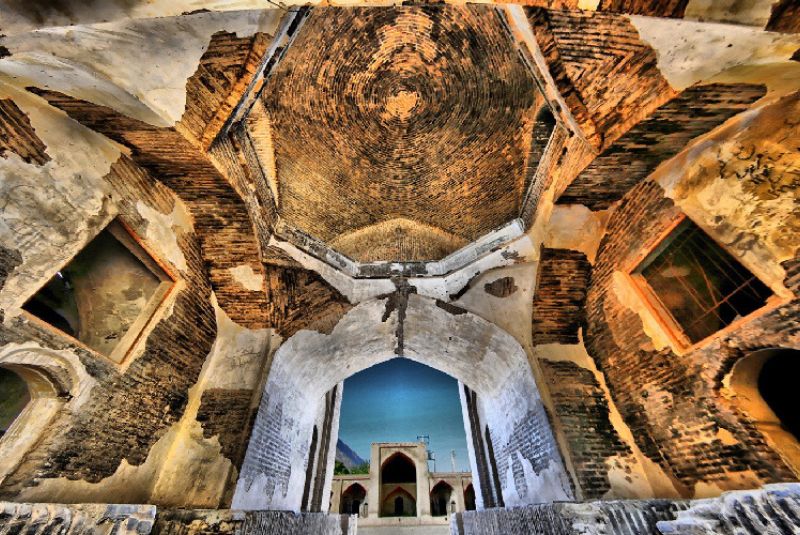
The centerpiece of Kharanaq is undoubtedly its historic castle, a fortification that dates back approximately 4,500 years. Originally built to fend off bandits and thieves who frequently raided the village, the castle evolved into a complex of multi-story houses constructed from clay and mud bricks.
This unique architectural style not only provided sturdy defense but also created a labyrinthine layout, complete with narrow passageways and concealed alleys, ideal for confusing and slowing down intruders.
What distinguishes Kharanaq Castle is its inclusion of defensive features such as fortified walls, towers, and four gates—each named after prominent figures or functions.
The strategic design includes six guard towers positioned strategically around the castle, enhancing its defensive capabilities. Moreover, the absence of ground-level windows in many homes served as a security measure against potential threats.
The Structure of Kharanaq Castle Homes
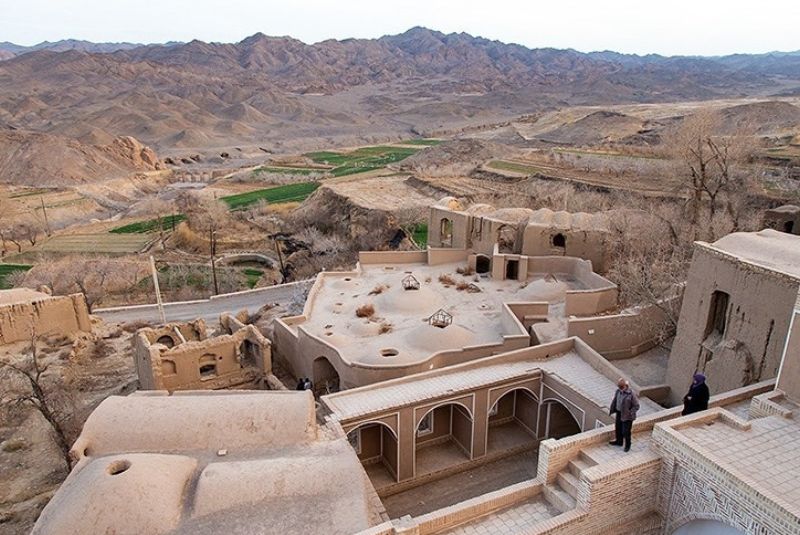
Within the castle's perimeter are approximately 80 homes, primarily two to three stories high. Each home was designed to reflect the economic means and social status of its occupants, featuring adobe walls, domed ceilings, and a mix of materials like reeds, wood, and thatch. Internally, rooms were floored with a mixture of earth and lime, while exterior surfaces were covered with mud plaster and gypsum decorations.
Unlike typical houses in hot and dry climates, most homes within Kharanaq Castle lack inner courtyards, instead using the ground floors for livestock or storage. The interconnected layout of the homes via internal pathways further contributed to the village's defensive strategy, ensuring that residents could move about discreetly and safely within the castle's confines.
Kharanaq Bathhouse
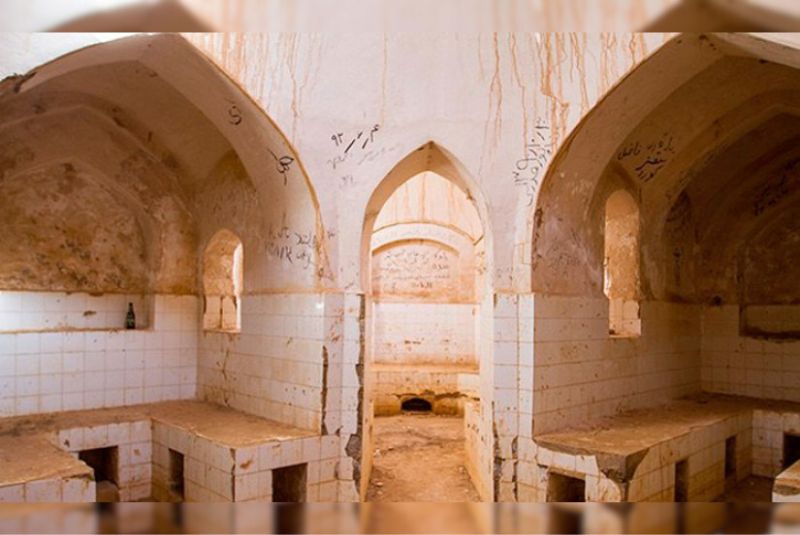
Another significant historical structure in Kharanaq is its bathhouse, a Qajar-era building situated near the village's agricultural fields and caravanserai. Built at a lower elevation than the castle but higher than the village, this strategic placement facilitated easy access to the local qanat water source while efficiently managing wastewater runoff to surrounding lands.
The bathhouse, with its vaulted ceilings and divided into smaller male and female sections, exemplifies traditional Iranian bathing architecture. It once served as a communal hub where locals could cleanse and relax, featuring intricately tiled walls and floors that added to its aesthetic appeal and functionality.
Minaret of Kharanaq

Standing tall above the historical structures of Kharanaq is its minaret, a distinctive feature of the village's skyline. Dating back to the Sasanian period, this minaret originally measured 15 meters in height and functioned as both a watchtower and a lantern holder. Its three-tiered structure, complete with spiral staircases for ascent and descent, exemplifies the architectural prowess of ancient Persian engineers and builders.
Despite undergoing modifications due to natural disasters like earthquakes and wind erosion, the minaret remains a symbol of Kharanaq's enduring spirit and architectural ingenuity.
Today, it is listed as a national heritage site, attracting visitors from around the world who marvel at its historical significance and panoramic views of the village and surrounding desert.
Jame Mosque and Hosseiniyeh of Kharanaq
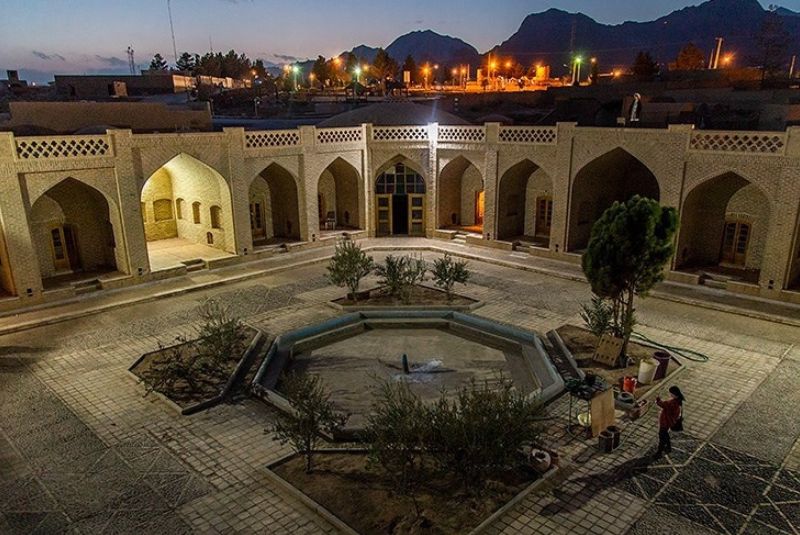
Centrally located within Kharanaq, the Jame Mosque and the nearby Hosseinieh (a Shia congregation hall) reflect the village's deep religious roots. The Jame Mosque, believed to date back to the 8th to 10th centuries, stands on natural terrain, while the Hosseiniyeh, built at a lower elevation, accommodates worshippers and community gatherings.
Constructed primarily from adobe bricks and clay, these religious structures incorporate elements of traditional Iranian architecture, including decorative tiles and vaulted ceilings. Their historical significance is underscored by their inclusion in Iran's national heritage list, recognizing their cultural and architectural importance.
Kharanaq Bridge
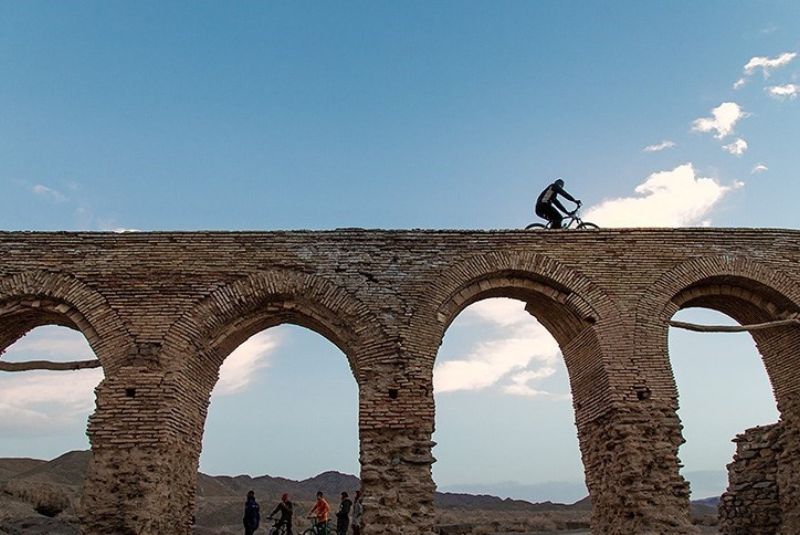
The Kharanaq Bridge, also known as the Abar-o-Ayoub Bridge, serves as a vital link connecting the village to agricultural lands across the Do-Kal River. Constructed over a millennium ago, this historical bridge spans 40 meters in length and rises 7.5 meters above the riverbed, making it one of the oldest water transport structures in Yazd Province.
Combining Sasanian and Roman architectural styles, the bridge originally facilitated the passage of water from one riverbank to the other, benefiting local farms and gardens.
Today, while the river may have dried up, the bridge stands as a testament to ancient Persian engineering and a favored spot for locals and tourists alike to traverse and admire.
Baba Khadem Shrine
Among Kharanaq's religious landmarks is the Baba Khadem Shrine, distinguished by its azure-blue dome and simple yet elegant architecture. This mausoleum honors a devout follower of Imam Reza (AS), who passed away during a pilgrimage and was interred in Kharanaq's verdant fields. Recently restored, the shrine's serene ambiance and historical significance attract pilgrims seeking solace and spiritual reflection.
Mirror Works of Kharanaq
A relatively modern addition to Kharanaq's attractions is the Mirror Works installation, conceived by Amir Hajbi to enhance the village's appeal. Comprising nine mirrors, each with diameters ranging from two to 40 centimeters, this artistic creation adorns the dry riverbed, reflecting the desert's stark beauty and sunlight.
Kharanaq Caravanserai
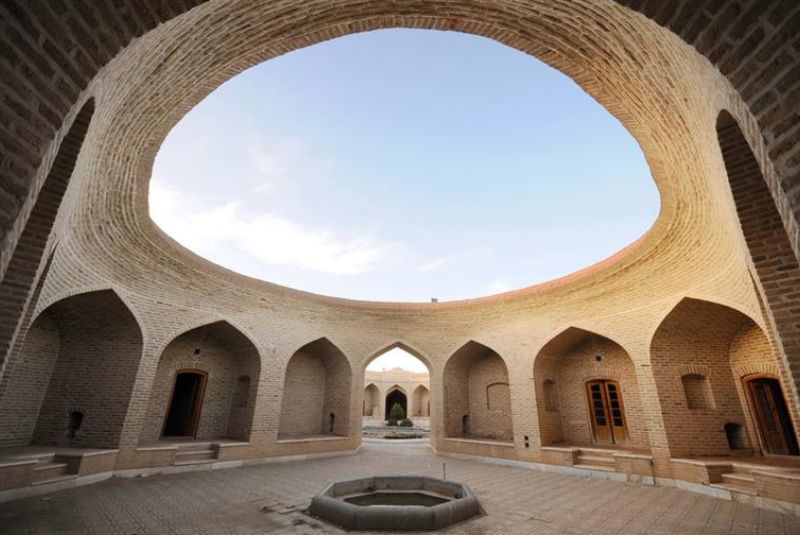
Originally dating back to the Sasanian period, the Kharanaq Caravanserai once served as a vital hub for merchants and travelers traversing the Silk Road. Restored under the orders of Mohammad Vali Mirza, son of Fath Ali Shah, this Iranian caravanserai continues to provide shelter for modern-day travelers, preserving its historical significance and architectural charm.
Mashhadak Shrine
Behind the Kharanaq Caravanserai lies a modest adobe and mudbrick shrine known as Mashhadak. This site is believed to have been a resting place for Imam Reza (AS) during his journey from Medina to Merv. A stone inscription on its wall dates back to 595 AH, marking it as a historically significant location tied to the passage of the revered Imam through the village.
Beit al-Muqaddas Mosque
Within the castle, there is the Beit al-Muqaddas Mosque, where local tradition holds that Imam Reza (AS) once prayed. Unfortunately, this mosque has fallen into ruins over the years, yet it remains a site of historical reverence for the villagers.
Sarcheshmeh Mosque
Located outside the castle, the Sarcheshmeh Mosque is over 120 years old. It continues to serve the local community as a place for daily prayers, maintaining its religious significance and connection to the village's spiritual life.
Shatergalo
Near the Kharanaq Bridge, visitors can find the remnants of a "Shatergalo" or a stone and mortar siphon system used for water distribution. This 30-meter structure played a crucial role in irrigating agricultural lands, demonstrating the advanced engineering skills of ancient inhabitants.
Bokenha
These deep, hand-carved cavities in the firm soil near the river and bridge were used as shelters by travelers and pilgrims. Resembling caves, these structures provided refuge and a safe resting place for those journeying through the area.
Water Mills
Kharanaq boasts two ancient water mills, one inside and one outside the castle. These mills, dating back 140 years, were essential for grinding grain and harnessing the power of the qanat (underground water channel) system. They were named according to the direction of the qanat's water flow: upstream and downstream.
Cistern
An old cistern built in the style of desert cisterns, featuring a single windcatcher, stands in the village. An inscription on its entrance dates back to 1318 AH, marking it as an important structure for water storage in the arid environment.
Old Cemetery
Located on the southwestern edge of the village, the old cemetery, or "Mazar Ghadim," includes a mudbrick washhouse with domed rooms. Today, this area is repurposed as stables or fodder storage, reflecting the changing uses of historical sites over time.
Qariyah Shamsabad
Near Kharanaq lie the ruins of the deserted village of Shamsabad. Featuring ancient stone and gypsum buildings in Sasanian architectural style, these ruins are believed to include the remains of the Yazdan fire temple, further enriching the historical landscape of the region.
Kharanaq Village Location
Kharanaq Historical Village is located in the north of Yazd, 70 kilometers east of Ardakan, along the Ardakan-Tabas road.
How to Get to Kharanaq Village
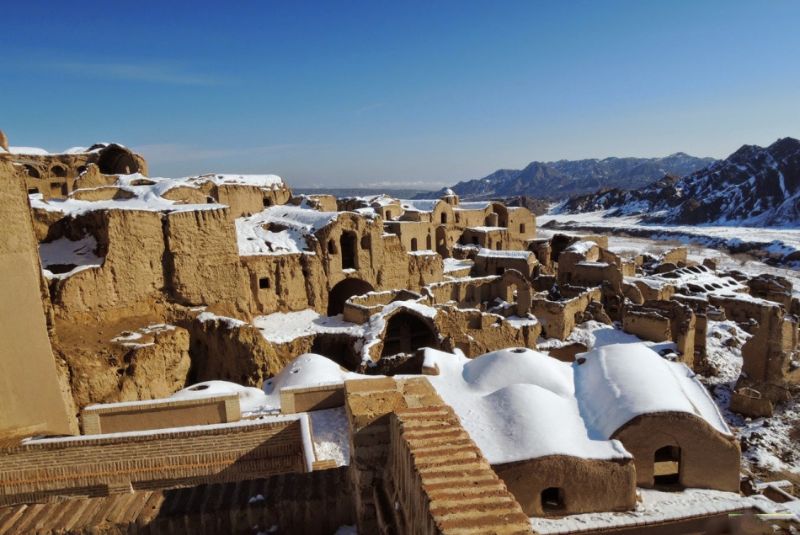
To reach this historical village, you must travel along the Ardakan-Tabas road and cover a distance of 50 kilometers. For those traveling from Tehran to Yazd, it is recommended to take a flight to save energy for exploring the sights in Yazd and its surrounding attractions, including Kharanaq.
Best Time to Visit Kharanaq Village of Yazd
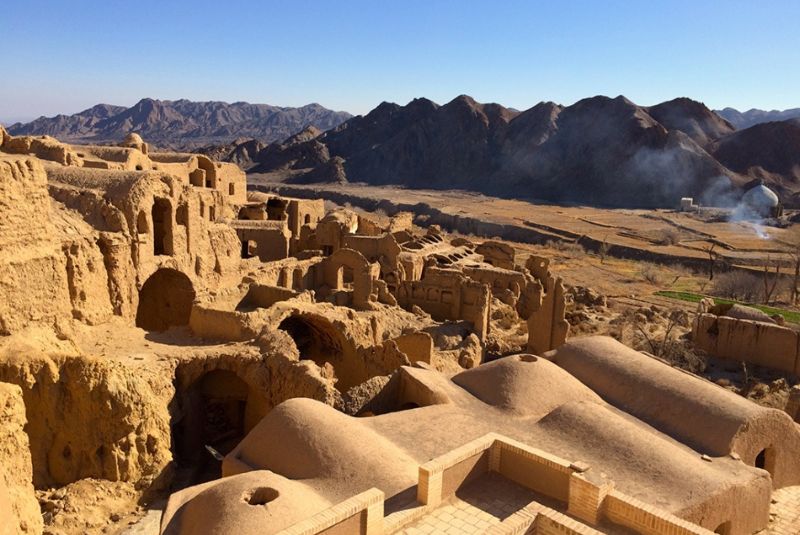
The ideal times to visit Kharanaq are early spring, autumn, and winter. In spring, pleasant weather and blooming trees make Kharanaq a perfect destination. Although Kharanaq's summer weather is cooler than other areas in the province, the strong sun can still be bothersome. Autumn and winter bring very cold temperatures to Kharanaq, though the days are moderate and free from harsh sunlight.
Accommodation in Kharanaq Village
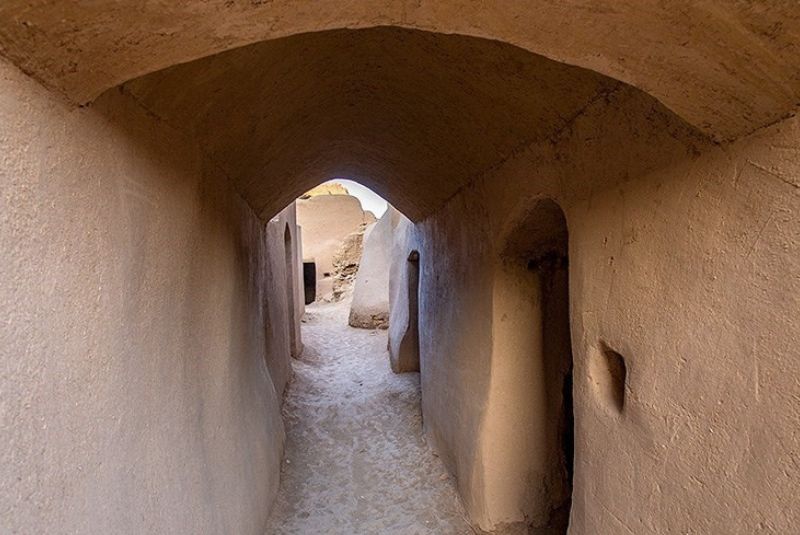
There is an active eco-lodge in Kharanaq where you can stay. Visitors can also stay at nearby lodges like the Ni Bad Kavir Zarrin Nature Park. Alternatively, accommodations in nearby towns are available, though it is advisable to plan your visit so you can return to your lodging before nightfall.
Tips for Visiting Kharanaq Village
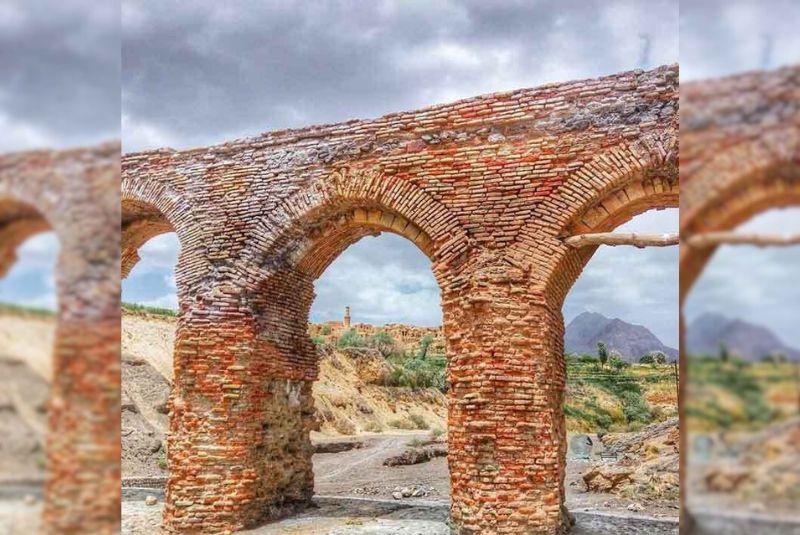
- Visiting all the attractions in Kharanaq requires more than one day.
- When traveling to Kharanaq, consider purchasing local souvenirs such as pistachios, zardak (a type of carrot), and handmade textiles like chador shab from village women.
- The historical sites in Kharanaq are in a delicate state; please protect these valuable landmarks by avoiding littering and not writing on them.
- Entry to Kharanaq village is free, and it is open for visitors every day.
Bottom Line
Kharanaq Historical Village offers a unique blend of ancient architecture, cultural heritage, and natural beauty. From the 4,500-year-old fortress and intriguing labyrinth of alleys to the historic bathhouse and serene religious sites, Kharanaq is a treasure trove for history enthusiasts and travelers alike.
Share your story!
Comment below and let us know about your Experience.
Your story inspires others!


Comment
Leave a Comment